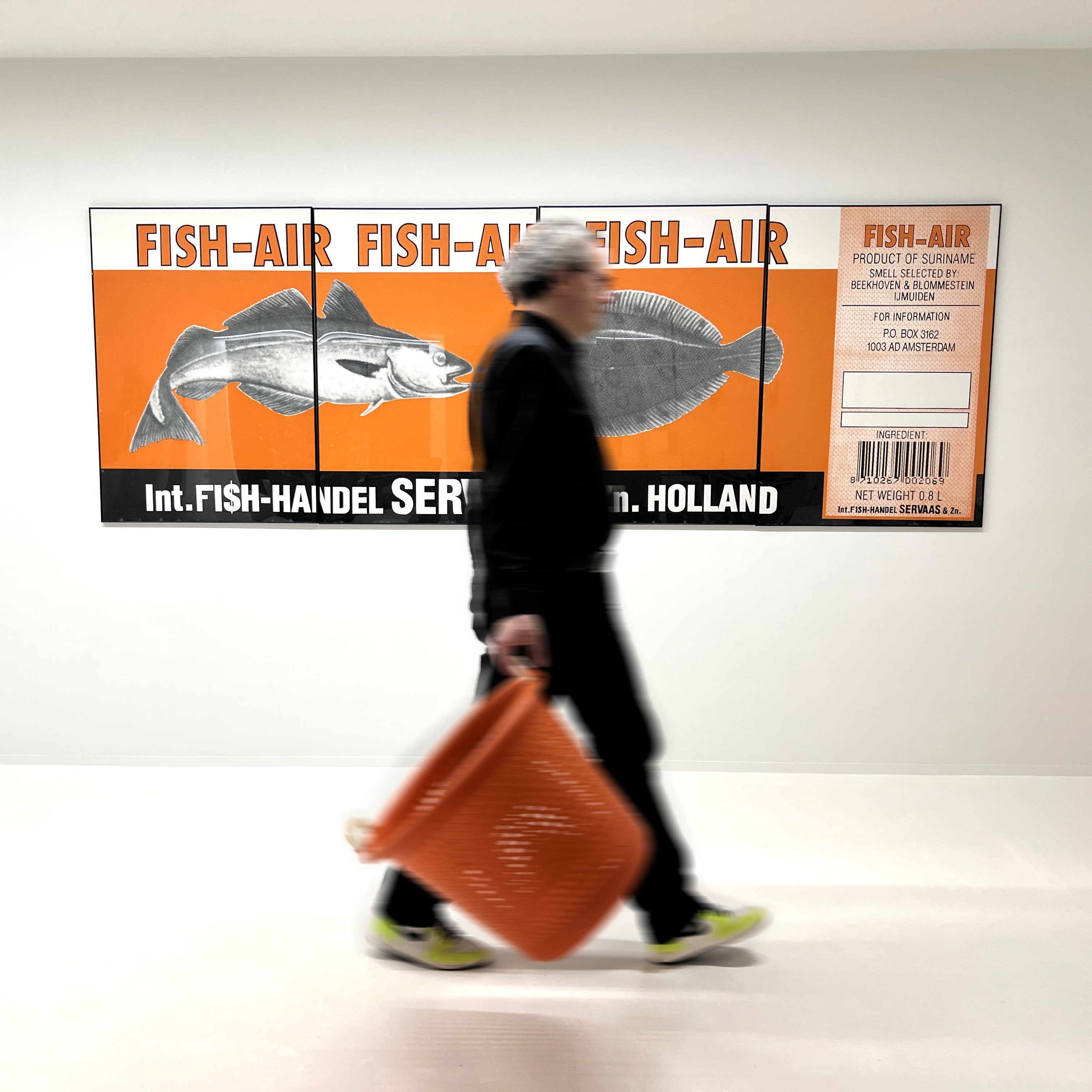
09-05-2023
FISH-AIR at Art Partout
In May 18, 2023, Art Partout showcased the works of the Dutch Business Art pioneer, Servaas Schoone, and temporarily became a branch of Int. Fi$h Handel Servaas & Zn.
At the core of Servaas's artistic practice was the production and sale of canned fish air. Unfortunately, Servaas passed away in 2001, but his son Wessel, who was always involved with 'Int. Fi$h Handel Servaas & Zn,' and also represents the "Zn." (Sons) in the company's name, successfully continues this activity.
In the 1950s, Marcel Duchamp created a series of "Air de Paris" readymades, where he filled small glass balloons with air from Paris. These balloons were then signed and numbered as artworks. Duchamp saw air as an immaterial element and thus pushed the boundaries of art. In 1957, Yves Klein, in turn, created a series of paintings he called "air paintings." He made these works by spraying blue paint onto a canvas while holding it against the airflow from an industrial ventilation system. The flow of air blew the paint in different patterns, creating a unique texture and form.
Manfred Kielnhofer sold air in cans labeled "Luft aus Österreich" (Air from Austria) and claimed that the air came from various Austrian regions, making each can of air unique. In neighboring Hungary, Jozsef Vass sold air in small plastic bags with the text "Life is air" written on them. They represented the transient nature of life.
French Fluxus artist Ben Vautier sold air in a bottle labeled "Air de Nice" (Air from Nice). He also sold "unsellable air" in a bottle labeled "Air de Paris" (Air from Paris). His work critiqued the commercialization of art. In 1961, his friend Piero Manzoni sold his tins of 'Merda d'artista' (Artist's Shit). He claimed that each of the 90 tin cans was filled with 30g of his own feces. No one ever attempted to verify it, but it was certainly a bold statement.
Andy Warhol turned the canned food can into an icon of his time by reproducing it multiple times. In 1962, he first exhibited a series of 32 small paintings of Campbell's soup cans in various flavors at a gallery in Los Angeles. The rest is history.
While art in cans might seem an unconventional form of art sales, it fits into the broader trend of marketing art as a commercial product and packaging art as a consumable item.
Servaas takes it a step further by not only canning and selling fish air as art but also consistently developing the entire business around it. Consequently, he is a very distinct player in the realm of 'Business Art.'